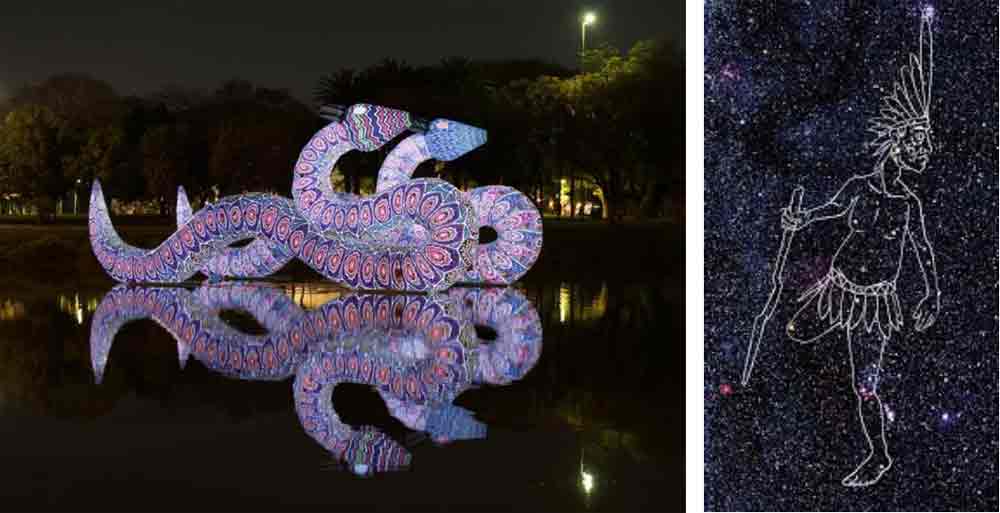Interpretation by Julia Vöhringer

Constellations have peen part of human culture everywhere, as the stars have fascinated people for as long as they exist and do continue to play an important role even nowadays. They are used to tell time, they are used for navigation, for weather forecast, NASA, astronomy, fortune telling, and so on. To get a better insight into a culture, you have get to know their stories and their lore, because those function as a mirror of society. The Greek and the Romans built a lot of lore around their Gods and the stars depict some of those stories (mythology) or what happened in them (Hercules,…). The same can be said for indigenous constellations: If you get to know the stories behind those stars, you can get an insight into indigenous cultures.
Indigenous constellations are similar, but also very different to those we know. Every indigenous culture or people had their own constellations. The Brazilian believe that the constellations have a meaning and predict what happens next. The indigenous constellations give impressions of the future. Their religion refers to the sky and the earth and people change their way of life and behaviour in accordance to the information taken from the stars.
There are at least 200 constellations catalogued. The constellations obviously differ from those we know, though their function can be similar in some cases. Some mark the beginning of new seasons for example: A constellation appears at the beginning of summer and thus heralds the beginning of the season. They are used for navigation and for mythology (=> story telling).

Indigenous artists, such as Haider Esbell, build sculptures of these native constellations (see picture of the two snakes). Indigenous cultures used to spread their mythology orally. How much of the original meaning has been preserved is unclear.
